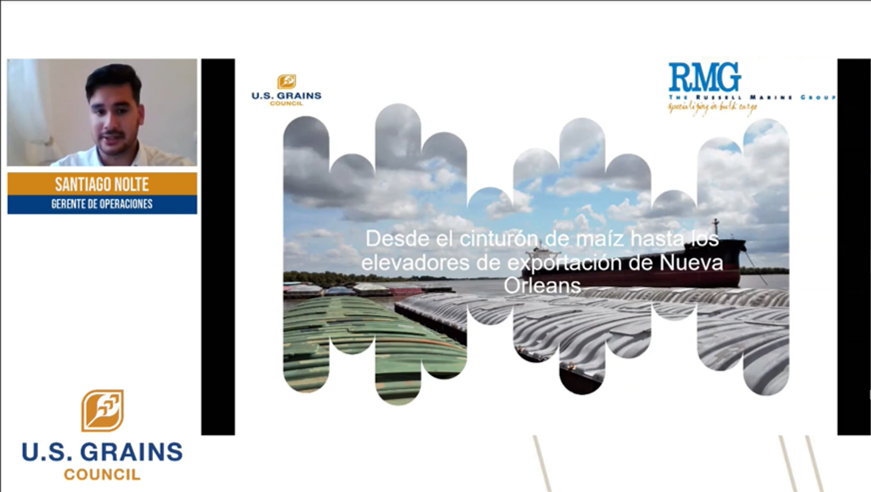Roughly 150 importers, industry association representatives and customs agency officials attended a U.S. Grains Council (USGC) webinar in late September aimed at troubleshooting import issues at the port of Puerto Cortes.
“Challenges with the sanitary and port authorities have translated into inefficiencies and additional costs for the Central American livestock industry,” said Ana Ballesteros, USGC marketing director for Latin America. “This program tackled specific issues related to port operations that will help importers in Honduras improve efficiency and reduce operational costs – all of which will support industry growth and subsequent demand for coarse grains.”
The four-hour webinar was divided into two sections. The first section focused on the U.S. export system, providing an update on supply and demand for U.S. corn, detailing how grain moves from the field to export elevators and explaining how the U.S. Department of Agriculture’s Federal Grain Inspection Service (USDA’s FGIS) is involved in the export process. The second half detailed how Puerto Cortes is handling coarse grain and co-product volumes plus offered a panel discussion about practices in place at other destination ports in Colombia and Costa Rica to address issues like shrinkage management.
“The webinar increased awareness of how the U.S. export system works and what practices help manage weight discrepancies,” Ballesteros said. “The information provided will help guide discussions between the control authority, the port administrators and importers as they work to improve unloading process costs.”
Honduras is a growing market for U.S. corn, importing nearly 747,000 metric tons (29.4 million bushels) in the 2019/2020 marketing year, up 29 percent year-over year. As such, the market is a key player in Central America for programs providing information on the U.S. export system for coarse grains and co-products.
An in-country port assessment in 2017 examined how U.S. grains are delivered, handled, preserved, stored and managed. A follow-up program in December 2019 identified specific concerns at the port in Puerto Cortes. In response, the Council worked with USDA’s Foreign Agricultural Service (FAS) to develop in-country training targeting port managers, importers and government authorities involved in customs and port regulations.
“The Council and USDA’s FAS agreed a joint discussion on port practices could help facilitate trade and help importers improve operational costs and efficiencies,” Ballesteros said. “When COVID-19 travel restrictions went into place, USDA’s FAS and importers agreed that a webinar would help address persistent problems between port administrators and importers.”
More than 75 percent of webinar attendees represented government authorities, a key component of instituting changes to help promote improved port operations.
“Working closely with USDA’s FAS was very relevant to have the government entities attending,” Ballesteros said. “Importers felt local authorities needed a better understanding of how the U.S. export system works to better regulate port processes in Honduras and administer appropriately.”
The Council will continue to monitor these discussions, follow how new practices are implemented and resume in-person programming after travel restrictions are lifted.
About The U.S. Grains Council
The U.S. Grains Council develops export markets for U.S. barley, corn, sorghum and related products including distiller’s dried grains with solubles (DDGS) and ethanol. With full-time presence in 28 locations, the Council operates programs in more than 50 countries and the European Union. The Council believes exports are vital to global economic development and to U.S. agriculture’s profitability. Detailed information about the Council and its programs is online at www.grains.org.

